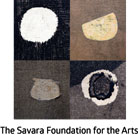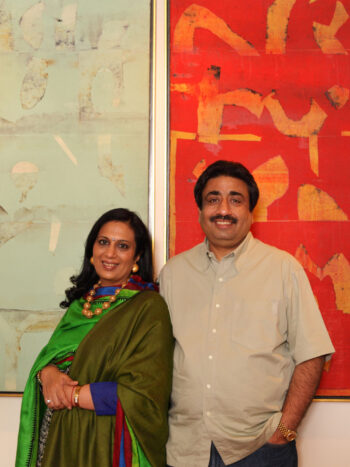About the Founding Collector-Couple
The Collector-couple, Roohi Savara, a Lawyer by profession and her husband, Rajiv Savara, a Fellow Chartered Accountant is recognized for their contribution as Collectors and Connoisseurs of Pre-Modern and Modern Indian Art. With and through their extensive interaction and participation on multiple initiatives with Museums and not-for-profit Organizations worldwide including the privilege of serving on various Advisory Committees and Boards of Trustees of Museums, led them to recognize the need for world-class Museums in India that showcase to Museum-loving audiences, the very finest examples of the Indian Visual and the Decorative Arts. With this in mind and with the determination to realize their this dream, the Savaras’ have collected over a span of close to three decades, with a trained eye backed by scholarship, the finest examples of the Indian Visual and the 18th through the early 20th century Decorative Arts.
Roohi and Rajiv supported the scholarship around and the hosting of a seminal exhibition including the publication on the Bengal Master Nandalal Bose at the San Diego Museum of Art and the Philadelphia Museum of Art – United States of America.
Rajiv had the privilege of serving a 5 years term, ending December 2013, on the Board of Trustees of the Philadelphia-based The Barnes Foundation which is home to one of the world’s largest Collection of Impressionist, Post-Impressionist and early Modernist Paintings, with especially deep holdings in Renoir, Cézanne, Matisse and Picasso. Assembled by the late Dr. Albert C. Barnes between 1912 and 1951, the Collection also includes important examples of African Art, Native American Pottery and Jewelry, Pennsylvania German Furniture, American Avant-Garde Paintings and Wrought-Iron Metalwork (Source : Barnes Foundation website)
The collector-couple have actively pursued pro-environmental causes and were an integral part of the initiatives spearheaded by the eminent Environmental Lawyer Mr. M.C. Mehta and the Justice Saikia Committee constituted by the Supreme Court of India, all of the combined efforts leading to the successful introduction of the environmental-friendly alternate green fuel CNG both, as a vehicular fuel as well as for industrial and commercial use, the latter having shown unparalleled success in the designated Taj Trapezium (the area surrounding the world-famous monument of Taj Mahal) wherein all the kilns running on coal / coke were converted to run on Propane and / or CNG. In addition, the pro-active litigation initiated and pursued in public interest by Mr. Rajiv Savara has led to the introduction of multiple measures on the River Ganges including the introduction of the 25 years and 100 years Flood Lines.




